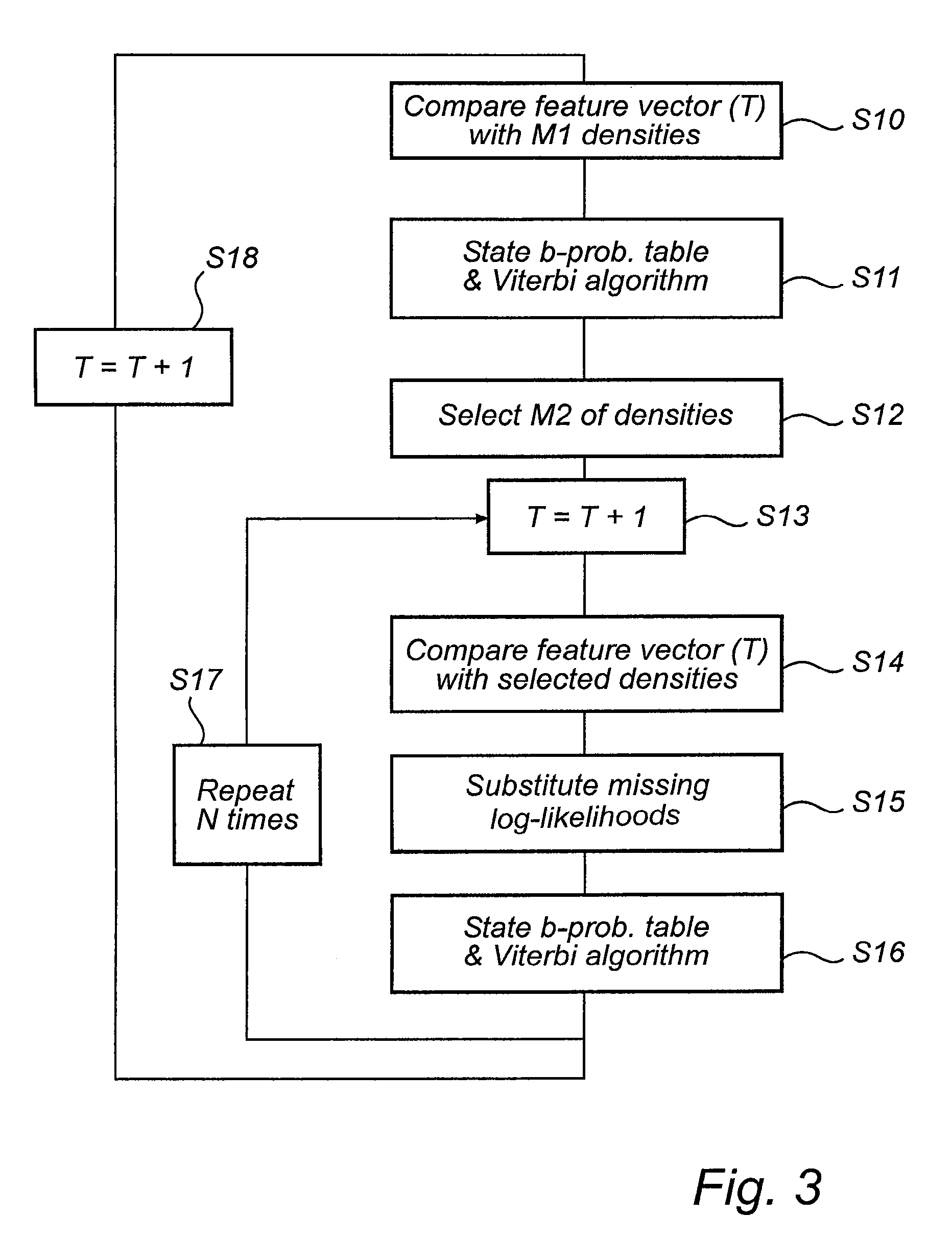Determining distortion measures in a pattern recognition process
- Summary
- Abstract
- Description
- Claims
- Application Information
AI Technical Summary
Benefits of technology
Problems solved by technology
Method used
Image
Examples
Embodiment Construction
[0044]In the following description, the pattern recognizing process is a speech recognition process, used in e.g. voice based user interfaces. However, this should not be regarded as a limitation to the invention, which is directed to pattern recognition in general. The incoming signal may be any digitized signal, and the candidate patterns may represent sounds, images, text, handwritten characters, etc.
[0045]A speech recognizer 1 as illustrated in FIG. 1 typically comprises a front-end processing section 2, responsible for the feature extraction, and a back-end processing section 3, responsible for the statistical analysis of extracted features with respect to model templates of candidate words or parts of words. These models can be created by teaching (speaker-dependent name dialing, SDND) or by modeling (speaker-independent name dialing, SIND).
[0046]The input to a speech recognizer 1 consists of a digitally sampled waveform 4 split into consecutive, possibly overlapping segments....
PUM
 Login to View More
Login to View More Abstract
Description
Claims
Application Information
 Login to View More
Login to View More - R&D
- Intellectual Property
- Life Sciences
- Materials
- Tech Scout
- Unparalleled Data Quality
- Higher Quality Content
- 60% Fewer Hallucinations
Browse by: Latest US Patents, China's latest patents, Technical Efficacy Thesaurus, Application Domain, Technology Topic, Popular Technical Reports.
© 2025 PatSnap. All rights reserved.Legal|Privacy policy|Modern Slavery Act Transparency Statement|Sitemap|About US| Contact US: help@patsnap.com



